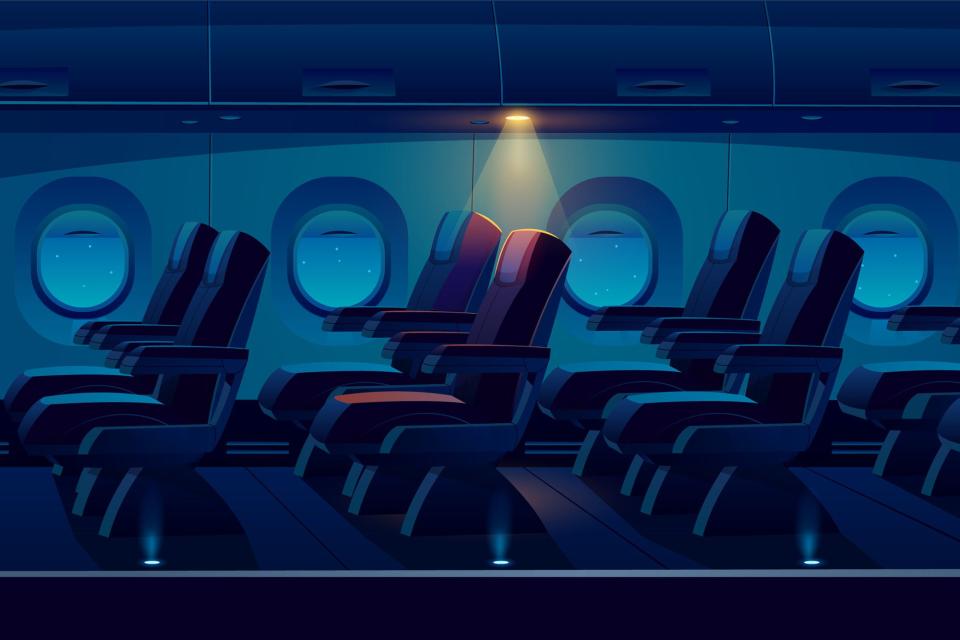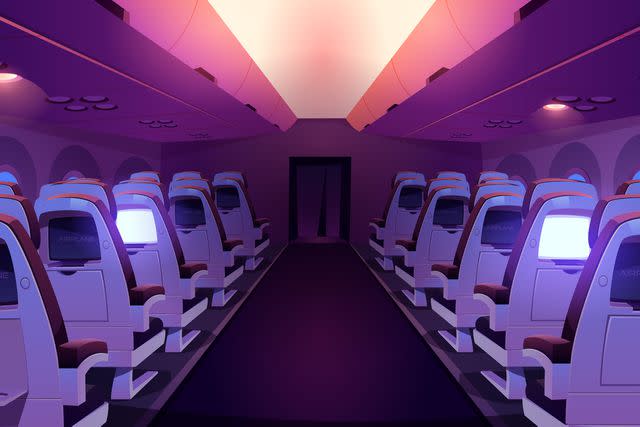These Are the Safest Seats on an Airplane, According to Aviation Experts
Remember that no matter where you sit, flying is the safest form of transportation.

Best Content Production Group/Getty Images
If you're a nervous flier — or perhaps just a curious one — you've probably thought about which seats on a plane are the safest in the event of an accident. And if we're looking at statistics based on past aircraft accidents, there's an answer.
"There actually is a safer place to sit on a plane, and that is in the rear of the aircraft," said Dan Bubb, a professor at the University of Nevada, Las Vegas. According to a 2015 TIME analysis of 35 years of Federal Aviation Administration (FAA) data, seats in the back third of the aircraft had a fatality rate of 32 percent, whereas seats in the middle third had a fatality rate of 39 percent and seats in the front third had a fatality rate of 38 percent.
Even more specifically, the middle seats in the back of the aircraft are statistically the safest, with just a 28 percent fatality rate. By comparison, aisle seats in the middle of the cabin had a fatality rate of 44 percent.
Dan Bubb is a professor at the University of Nevada, Las Vegas, a former airline pilot, and an aviation expert.
David Rimmer is CEO of AB Aviation Group, a private aviation company, and a survivor of a midair plane collision.
But remember, these are just overall odds based on previous plane accidents — and there have been outliers. For example, when United Airlines Flight 232 crashed in Sioux City, Iowa in 1989, most of the 184 survivors were sitting in the middle third of the plane. In the 1977 Tenerife disaster, aviation's deadliest accident that killed 583 people, the 61 survivors sat mainly in the front of the Pan Am aircraft involved in the crash.
Related: How to Get Over Your Fear of Flying With 13 Tips From Pilots, Therapists, and Flight Attendants
Ultimately, it comes down to the very specific set of circumstances of a potential incident, so picking a seat based on your odds of surviving in a crash might not be the best idea. There's certainly a bit of luck involved, and airplanes are generally a very safe form of transportation. Plus, sitting in the back of the plane isn't always the most pleasant experience.

klyaksun/Getty Images
"Data shows that while the safest seats are in the rear of the airplane, that is also the most uncomfortable during turbulence," David Rimmer, CEO of AB Aviation Group and a survivor of a midair plane collision, tells Travel + Leisure. And that's not to mention the annoyance of the proximity to the lavatory and galley.
"Given how unlikely an accident is, turbulence is a much more frequent condition most fearful fliers should avoid," Rimmer advises. He suggests you "opt for marginally ‘less safe’ seats near the middle of the airplane” to avoid the worst impacts of potentially rough air.
If you really wanted to pick a "safer" seat, it might be prudent to choose one near an exit row. Based on FAA research about post-crash survivability, planes must be able to be fully evacuated within 90 seconds, which is why there are so many emergency exits onboard. And a 2011 analysis by the University of Greenwich of more than 100 plane crashes determined that passengers within five rows of a functional exit were more likely to safely evacuate the aircraft.
At the end of the day, it probably doesn't matter which seat you pick, because flying is one of the safest forms of transportation. And even if you were in a plane accident of some kind, your overall odds of survival are good. According to a 2020 study by the National Transportation Safety Board, 98.2 percent of passengers in aviation accidents between 2001 and 2017 survived with minor or no injuries, 0.6 percent survived with serious injuries, and 1.3 percent were fatally injured.
Rather than focusing on picking a "safer" seat on a plane, there are better steps to take to ensure your safety in an emergency. "Pay attention to flight attendant instructions, including the safety demonstration," says Bubb. Pick up that safety card in the seatback pocket and give it a good read. Count how many rows away the nearest exit is so that you'd be able to locate it in low visibility. And never, ever waste time by grabbing your belongings before evacuating a plane in an emergency — get out as fast as possible.
For more Travel & Leisure news, make sure to sign up for our newsletter!
Read the original article on Travel & Leisure.


